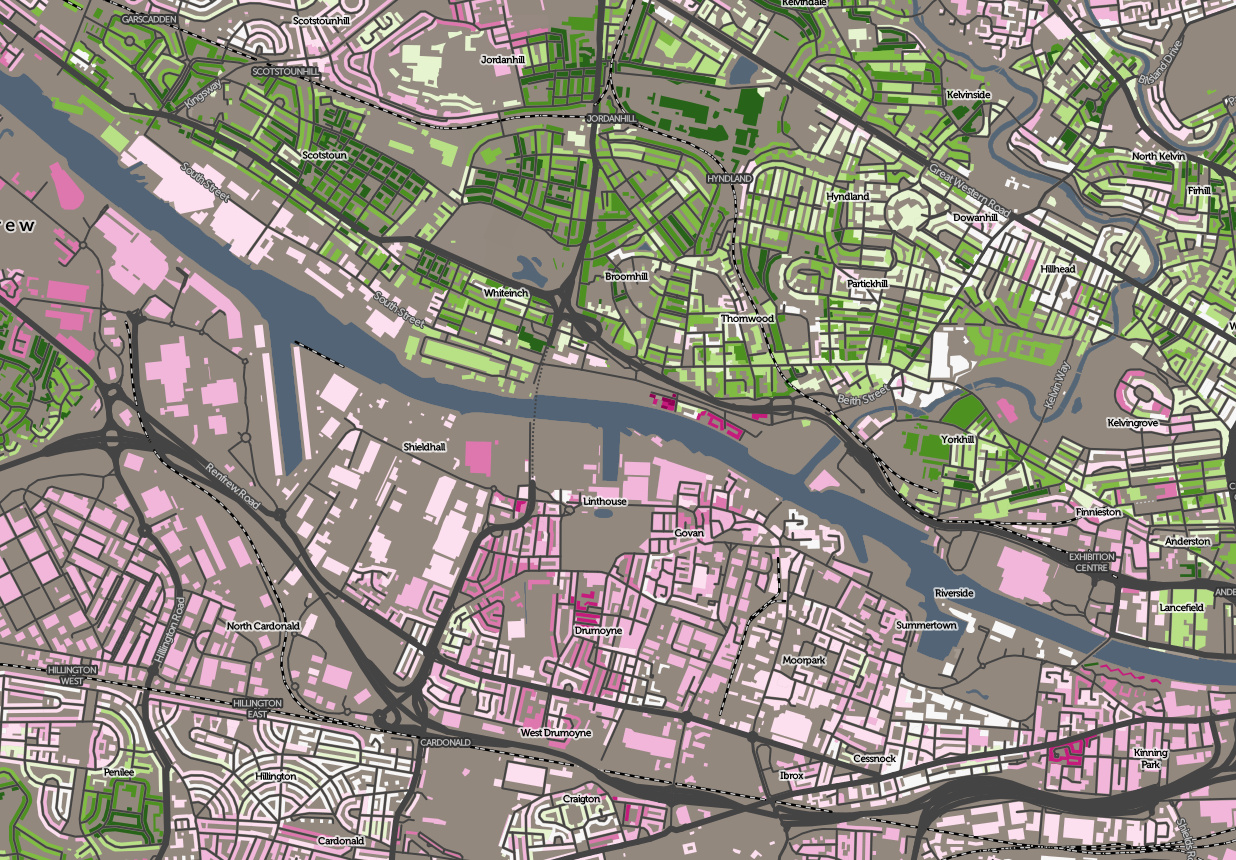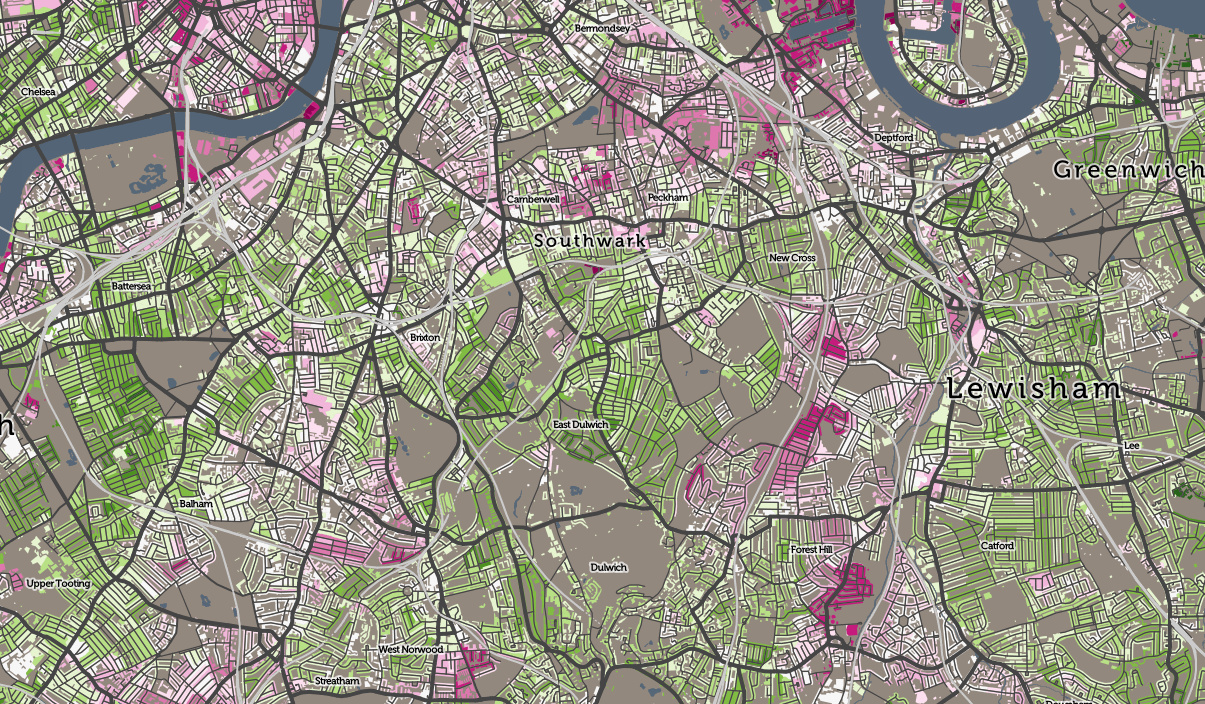Broadband Speed in the UK

I’ve recently a published on CDRC Maps a map of Broadband Speed in the UK. This is the average download speed for residential properties, right across the UK. It’s based on data annually released by OFCOM (I’m using the most recent dataset from 2016). I’m using a Purple-White-Green colour ramp, where Purple indicates areas with very slow speeds, white tends towards the national median and dark greens show areas of very fast connection – potentially homes using the new “ultrafast” connections available in some areas.
It should be noted that this is based on the actual average download speed based on the deal people have signed up for, not the maximum attainable download speed (either theoretical or actual) in an area. I hypothesise below that, in cities, this may be due to consumer inertia as much as infrastructure gaps – while in rural areas it is certainly the latter.
As would be expected with infrastructure costs, the economics of putting in fibre connections, and increased distances to the nearest telephone exchanges, broadband speeds still suffer in the countryside, with the Llandrindod Wells (LD) postal area in rural central Wales, having the slowest average broadband connection of 14.9Mbit/s. Looking at specific postal outcodes, PA70, on the also extremely rural island of Mull in western Scotland, has an average speed of just 1.1Mbit/s.
Of note, as well as this urban/rural divide, the very centre of cities often show slower speeds than the suburbs. This is possibly because of the difficulty of installing the needed infrastructure under narrow, busy streets and through old, often historic buildings. By contrast, newer housing developments, normally on the edge of cities may come with broadband infra designed in to the plans. The fastest postal region is OX, the Oxford postal area, perhaps reflecting the large technologically literate population (thanks to the universities and various science parks in the area). The fastest postal outcode in the country, however, is N1C, the new area behind King’s Cross. This is a central city area, but one which has essentially been built from scratch in the last few years, rather than needing broadband retrofitted into it. Another new area however, E20 (the Olympic Park) appears in the London bottom 10.
An alternative argument is that it may be that city centres got the “first wave” of broadband capabilities, many years ago, and people switched then – and consumer inertia means that they are less likely to switch to faster broadband offerings that are now available to them. In central London, the Rotherhithe area shows up as having particularly slow broadband speeds being used. This area is quite distinct to just about every other central London area, having become a residential area in the 1980s and 1990s. It is also rather isolated geographically. However, the lowest speeds of all in London are found, rather surprisingly, in and around the few residential areas of the City of London. The Barbican Estate has few keen users of ultra-fast broadband. It may be available to them, but the elderly population here may just not want it.
You can download the data, and see the Top/bottom 10 postal area stats, on the CDRC Data page for the dataset, or explore the data on the interactive map.
Above: A river divides them – broadband average download speed in west Glasgow. Below: Variations in south London. All maps based on data which is Crown Copyright OS and OFCOM.

